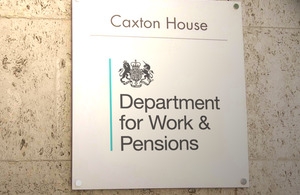
Auto-enrolment bumped pension saving by £2.5bn per year

Automatic enrolment increased pension saving by £2.5 billion per year by April 2015, according to a new report.
The study used data on almost half a million jobs from April 2011 to April 2015 to look at how contributions to workplace pensions by private sector employers and their employees have been affected by automatic enrolment.
The findings were published today by the IFS and funded by the IFS retirement saving consortium.
Automatic enrolment increased pension participation among those eligible by 37 percentage points, so that by April 2015, 88% of these private sector employees were members of a workplace pension scheme, the researchers said.
In contrast, prior to automatic enrolment around half of these employees were members of a workplace pension and membership had been falling over time.
In 2012 there were around 5.4 million private sector employees who were a member of a workplace pension. By 2015 this had increased to 10.0 million.
Of this increase of 4.6 million our estimates suggest 4.4 million was the result of automatic enrolment. At this point one-quarter of eligible private sector employees (3.4 million) worked for an employer that was still to be brought into the scope of the policy.
Automatic enrolment boosted pension coverage by the most among those aged 22 to 29, those earning between £10,000 and £17,000 per year, and those who have been with their current employer for less than a year.
For each of these groups, for whom pre-reform coverage rates were particularly low, automatic enrolment has increased membership rates in workplace pensions by over 50 percentage points. In 2015 coverage among all of these groups had risen to over 80%.
Jonathan Cribb, a senior research economist at the IFS, and an author of the report, said: "Automatic enrolment has been very successful in boosting membership of workplace pensions. This has been particularly true of younger employees aged 22 to 29 and relatively low earners on between £10,000 and £16,000 per year. Significant numbers of those not directly targeted by the policy have also been brought into workplace pensions, such as those earning less than £10,000.
“The story of automatic enrolment is certainly a case of so far so good. A key issue is whether those brought into workplace pensions at low contribution rates will remain in when minimum contribution rates start rising."
Sophie Robson, author of a new report called ‘Generation Austerity: Brexit and beyond’ and consultant at MRM Communications, said rates of participation showed it had been a “huge success” – particularly among younger workers.
She said: “This is particularly welcome news given the fact that the new MRM Young Money report found only 5% of 18 to 25 year olds actually saw saving into a pension as a priority, and nearly one in five (17%) didn’t expect to be able to retire until they were at least 75.
“With engagement in this age group clearly an issue, anything we can do to help young people squirrel away extra savings as regularly and as early as possible is helpful. However, we shouldn’t forget that with overall contributions among this age group still low at around 2%, more needs to be done to warn them that the money they put away via auto-enrolment is just the tip of the iceberg of what they will actually need to fund the retirement of their dreams.”
Tom McPhail, head of retirement policy at Hargreaves Lansdown, said: “Auto-enrolment is proving to be one of the most successful policy interventions of the 21st century so far. It has already increased the number of people saving for retirement by 6.7 million and is projected to eventually boost annual savings by £15 billion a year; this is powerful stuff.
“However there is still a huge amount more to be done and next year’s review by the DWP will set the agenda for the next phase. If we don’t keep moving forwards with the reforms, there is a risk that much of this initial good work could yet be wasted.”
